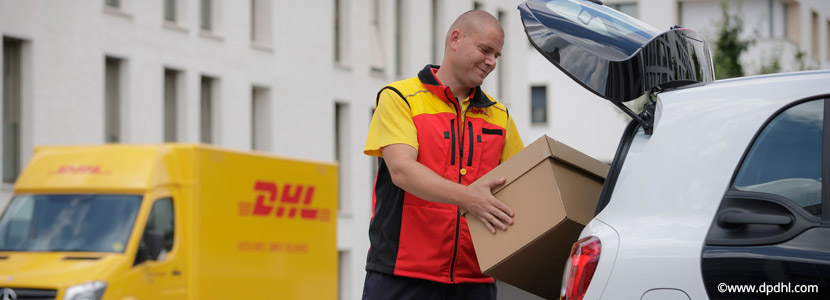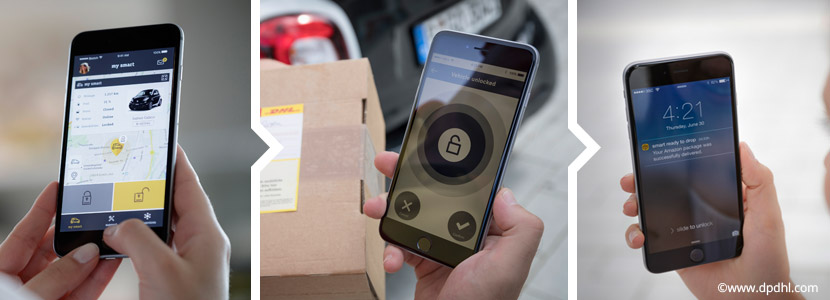
Currently the CEP provider DHL and Smart are launching a joint pilot project in selected German cities that allows Smart-owners to use their cars as a mobile delivery address for their parcels.
For this project the two partners have developed and tested their own solution for the so-called trunk delivery during the recent months in order to ensure a high level of security for goods and vehicles.
From September, an enhanced market test starts in Stuttgart, a few months later the service will also be available in Cologne, Bonn and Berlin. With several hundred participants per city the CEP service DHL and Smart want to gather experience under realistic conditions. Those wishing to participate as an owner of a Smart in this market test, will find more information and can apply at www.smart.com/drop. Smart takes over the necessary retrofitting of the vehicle at the merchants. To use the new storage service, the customer can also sign the necessary agreement with DHL when registering their vehicle at Smart as a storage location. For this purpose the customer portal www.paket.de of CEP provider DHL package has been connected to the customer portal of the vehicle manufacturer.
Smartphone meets CEP

The DHL delivery person is also informed by app about the desired delivery location and receives unique access to the vehicle valid only for a certain period of time. With the unique TAN, the online shoppers already places in his order, the DHL parcel delivery service can locate and open the vehicle within a limited period of time for delivery. So he gets access to the trunk and can both insert the ordered package, as well as directly take any returns. Locking the vehicle simultaneously extinguishes his admission. The owner of the vehicle is then automatically notified of the successful delivery via app. The secret behind this simple procedure for the user is the keyless opening, which the Smart parent enterprise Daimler already uses with the Car sharing services for Smart vehicles.
We are excited to learn about the experiences made during the test phase.
